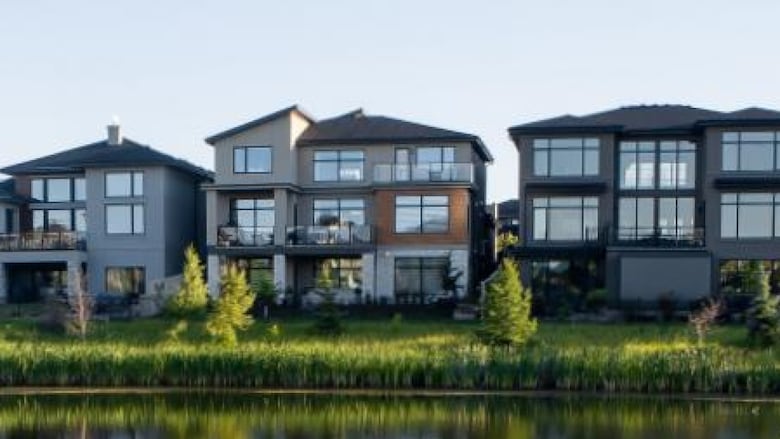BILD Edmonton Metro pushing for more action to use annexed land for growing population
Group wants more proactive planning for land annexed south of city in 2019

A group that represents real estate developers in Edmonton says expanding housing into outer neighbourhoods is needed to keep pace with population growth.
BILD Edmonton Metro presented findings tied to what they say are economical advantages to building outward in a report that was released on Tuesday.
"We know that over $3.2 billion will be invested by the private sector in the development of these neighbourhoods, and $2.4 billion of that is in road infrastructure alone," Lindsey Butterfield with BILD Edmonton told media during a news conference in Currents of Windermere.
"Once fully developed, the area is expected to contribute approximately $309 million annually in property tax revenue to the City of Edmonton."
But to get there, the group says they want more proactive planning for land annexed south east and south west of city in 2019 to accommodate up to one million more city residents in alignment with the city plan.
The mayors of Edmonton and Leduc County signed an annexation deal in 2017 that added nearly 9,000 hectares of land to the city's southern limits south of 41st Avenue.
"Too often, growth is framed as a cost burden, but this report shows that when investment is planned well, growth can be a net benefit," Butterfield said.
"The early capital investment is largely borne by developers, not taxpayers and the long-term revenues can help fund the services that all Edmontonians need and enjoy. This is especially important as Edmonton prepares for the future."
Jason Cunha, director of future growth at the City of Edmonton, told CBC on Wednesday that the city plan is a resource that guides how the city grows.
"It's really about both being an important part of the city's growth, rather than one taking precedence over," Cunha said on balancing growing outward with infill.
Annexed land is taken into account in the city city plan as future growth area.
"They're really identified as a key piece of the city's growth at the 1.5 million population horizon. And so what that means is … everyone's aware the city's been growing faster than expected over the last few years, but we're still quite a way out from that population horizon," Cunha said, noting that rather than having set timelines, everything is based on population horizons, which is the future trajectory of how a population is expected to grow.
"When we talk about whether a neighborhood pays for itself or doesn't pay for itself, the neighborhood infrastructure and the neighborhood specific services are a part of the picture,"Cunha said.
"But there's … those broader city costs that are really hard to quantify at a neighbourhood level, which is why as a city we budget for the entire city operation."
Are Canadian suburbs 'bland and lifeless?'
University of Alberta urban planning professor Sandeep Agarwal would argue suburbs are full of life. He has researched the demographics that are increasingly starting to make up new neighbourhoods in Edmonton.
"Suburbs are often portrayed as homogenous or lacking in vitality. In reality, they have become a new heart of immigrant life, offering affordability, familiarity and opportunity," said Agarwal who contributed to BILD's report.
"We need to rethink outdated assumptions about who lives in the suburbs and why do they live there. The data is fairly clear — Over 40 per cent of newcomers are now settling outside of the traditional gateway cities of Toronto, Vancouver and Montreal."
Agrawal, whose research has focused on the settlement experience of newcomers to Canada, said suburbs have become a new hub of immigrant life, offering affordability, familiarity and opportunity.
"We see this vividly reflected in areas like Heritage Valley and Windermere, where we find growing concentrations of South Asians, Chinese, Filipino and Black communities," Agrawal said.
Between 2006 and 2021, home prices in Heritage Valley and Windermere increased by about 40 per cent, Agrawal found, while incomes rose only by 25 per cent in 2024 with the average sale price in the area standing at just over half a million dollars.
"This underscores the pressure on affordability, especially for the first-time buyers, still many immigrants are planting deep roots in Edmonton South, not just buying homes, but building lives," Agrawal said.
"There's a stereotype that Canadian suburbs are bland and lifeless, but in Edmonton and increasingly across Canada, they are vibrant, dynamic and deeply human spaces."
